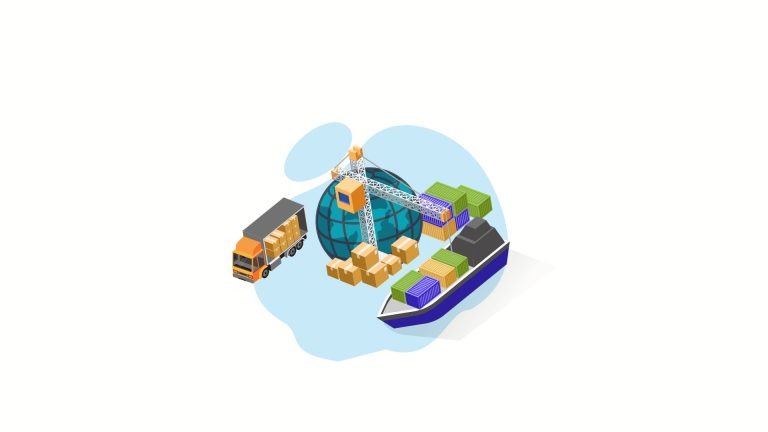Welcome to another Logistics News Update.
It’s been a tough few weeks across the trade and logistics landscape and the pressure is mounting. From citrus growers to the auto sector, recent U.S. tariff threats, which could range up to 30%, have already had a significant impact, with citrus exports and vehicle shipments to America plunging as much as 80%, threatening jobs in both industries.
Meanwhile, Botswana’s Central Bank has adjusted the pula’s depreciation rate upward to 2.76% over the next year to respond to a slump in diamond revenues, a move that’s putting pressure on currency stability across Southern Africa. We have also received confirmation of a foot-and-mouth outbreak from the Department of Agriculture. Then, added to all of this, shipping lines have started to increase or as they say, “Peak Season Surcharge “PSS” of up to $1000 (nearly R18,000), which will also hit us hard.
However, winter is fighting its last fights as spring approaches, we will have an interesting August/September in the logistics world.
US Tariffs Threaten SA Exports – and Government Silence Worries Exporters -adapted from FreightNews
South African exporters are still in the dark with just days left before a 30% tariff increase on certain exports to the United States could come into effect on 1 August. Despite the urgency, the Government of National Unity (GNU) has provided no updates on negotiations with the Trump administration. Exporters and freight forwarders, including Terry Gale from Exporters Western Cape (EWC), say they’ve received no communication from the government, despite writing to the Presidency. They warn that the potential tariffs could seriously damage the agricultural and manufacturing sectors in the region. Citrusdal, a citrus-exporting town employing 5,000 workers, could be devastated. Other businesses at risk include olive oil producers in Worcester, a packaging plant in Cape Town, and a doors and windows manufacturer in Moorreesburg, all of which rely heavily on the US market. Read the full article in FreightNews
Global trade endures policy changes and geo-economic risks
Global trade remained resilient in the first half of 2025 despite growing policy uncertainty, geopolitical tensions, and slower economic growth. UNCTAD estimates a US$300 billion increase in trade value, with quarter-on-quarter growth of 1.5% in Q1 and 2% in Q2, supported by steady increases in both goods and services. Developed economies led this rebound, driven by a 14% surge in U.S. imports and 6% growth in EU exports, while China’s exports remained steady thanks to stronger trade with Africa and regional partners. However, UNCTAD warns that mounting risks, including potential new U.S. tariffs, global supply chain vulnerabilities, a slowdown in China’s manufacturing, and geopolitical pressures, may weigh heavily on trade in the latter half of the year. Adapted from FreightNews
Let’s Learn: What Is a Bill of Lading?
A Bill of Lading (B/L) is one of the most important documents in shipping. Think of it like a receipt, contract, and proof of ownership all rolled into one.
When goods are loaded onto a vessel, the shipping line issues a B/L. It includes details about the cargo, the sender, the receiver, and the destination.
There are three key functions:
- It’s proof that the goods were received in good order.
- It’s a contract of carriage between the shipper and the carrier.
- It acts as a title document, meaning the holder can claim the goods at the destination.
There are two main types:
- Original B/L – needs to be physically handed over to release cargo.
- Telex Release / Express B/L – allows quicker release without paper documents.
Understanding how a Bill of Lading works helps you avoid delays, disputes, and extra charges. Next week we are going to look at SARS Customs VAT and understand how it is calculated.
NEWS
SA can resolve the US tariff threat – citrus growers
Source: FreightNews – 16 July 2025

The Citrus Growers’ Association of Southern Africa (CGA) has raised fresh concerns over the proposed 30% tariff on citrus exports to the United States, set to take effect on 1 August. CGA CEO Boitshoko Ntshabele warned that the tariff would render South African citrus uncompetitive compared to exports from countries like Peru and Chile, which only face a 10% duty. The uncertainty following the end of a 90-day reprieve on 9 July is causing major disruption, particularly as the citrus season continues through to October. Rural towns like Citrusdal, which rely heavily on US exports, are especially vulnerable.
Ntshabele emphasised that local growers have spent years building relationships with US buyers and consumers, who value the unique flavour of South African citrus. He noted that these regions, especially in the Northern and Western Cape, are highly sensitive to global market shifts. A sudden loss of access or market competitiveness could significantly impact livelihoods in these communities. Despite the threat, the CGA remains hopeful that a trade solution can still be reached in time to avoid long-term damage.
The CGA is calling for urgent intervention from the Department of Trade, Industry and Competition to fast-track negotiations with the US. Ntshabele believes that a fair-trade agreement or exemption for citrus and other fresh produce is achievable. He also highlighted that South African citrus does not compete with US growers due to counter-seasonal supply. Instead, SA exports support consumer demand when US citrus is out of season, ultimately boosting overall consumption and benefiting both markets.
Looking ahead, the CGA projects that the local citrus industry could generate over 100,000 jobs by 2032 but this hinges on improved market access. With exports to the US having nearly doubled since 2017, Ntshabele believes there is a strong consumer appetite and opportunity for growth. He stressed that extending access beyond the Western and Northern Cape to all provinces would unlock further potential and help sustain the industry’s expansion….
WEEKLY NEWS SNAPSHOT
- Drivers facing 18‑hour delays at port slots (17 Jul 2025): Harbour carriers are battling the Transnet booking system with up to 18-hour wait times just to use a slot, leading to rising frustration across the logistics chain.
- First half of 2025 casts gloom on H2/MSI warning (18 Jul 2025): Maritime Strategies International says geopolitical tensions US‑US-China tariffs and Middle East instability are weighing heavily on the liner trade, signalling a cautious outlook for the second half of 2025.
- Steenhuisen to weigh in on Trump tariff talks (18 Jul 2025): Opposition leader John Steenhuisen is expected to reveal more details on how South Africa is navigating US tariff threats ahead of the planned August 1 duty hikes.
- Höegh’s new vessels call at East London (18 Jul 2025): Höegh’s next-gen car carrier handled 1,183 fully built BMW and Nissan vehicles at the East London terminal, a nod to growing vehicle exports through SA ports.
- Germany pledges €10 million investment in Africa (18 Jul 2025): New German government makes a strategic commitment to deepen economic ties across Africa, including South Africa.
- Chicken importers flagged on safety issues (17 Jul 2025): Brazilian chicken imports resumed, but FairPlay has warned of serious lapses in food‑safety standards in the supply chain.
- Red Sea crisis rattles container emissions (15–17 Jul 2025): Shipping analysts point out that CO₂ emissions are surging due to longer rerouting around the Red Sea, reinforcing regional instability as a hidden cost to global logistics. Source: FreightNews
Key Highlights from Last Week’s Discussions – 13th July
Source: BUSA, SAAFF, and global logistics data
South African Ports:
Container throughput dropped 11% week-on-week to 86,967 TEUs. June saw an 8% monthly rise in container volumes (though still 5% lower year-on-year), bulk cargo increased by 6%, and vehicles by 15%. Adverse weather and equipment breakdowns continued to disrupt operations, especially in Durban and Cape Town. Rail cargo out of Durban rose 9% to 3,771 containers, though TFR’s Pretoria–Durban line is shutting for two weeks.
Global Shipping:
Drewry’s World Container Index fell for the fourth week in a row, down another 5% to $2,672 per 40ft (↓55% y/y). The Red Sea remains volatile, with two more bulk carriers sunk. Megamax vessels continue to avoid the region.
Air Cargo:
June air cargo volumes dropped m/m at OR Tambo (↓3%) and Cape Town (↓15%) but rose in Durban (↑13%). Y/y volumes are up across all airports: Johannesburg (↑6%), Cape Town (↑1%), and Durban (↑30%). Year-to-date, international volumes are up 5%. Domestically, volumes plummeted Cape Town by 80% m/m.
Road & Borders:
Border crossing times improved slightly. N4 traffic rose 4% to 1,622 trucks/day, though queue times increased to 4.9 hours. Regional delays remain high at Beitbridge and Kasumbalesa.
International Trade:
World trade rose ~4% y/y in Q1, led by pre-emptive US-bound shipments. Africa’s imports rose 5.1%. Despite this, the WTO predicts only 0.1% growth for the full year due to global uncertainty.

Global Freight Rates
Weekly Container Rate Update – 17th July 2025
Drewry’s World Container Index decreased 2.6% to $2,602 per 40ft container this week.
Freight Rates Continue to Fall
Drewry’s World Container Index dropped by 2.6% this week, making it the fifth weekly decline in a row. Rates had surged earlier this year after US tariffs were announced in April, but that impact has now worn off, with steady drops since mid-June. Transpacific routes saw further declines. Shanghai to Los Angeles dropped 4% to $2,817 per 40ft container, and Shanghai to New York fell 6% to $4,539. Despite the dip, both lanes remain higher than they were 10 weeks ago. Looking ahead, Drewry expects rates to keep falling in the second half of 2025 as demand softens again. The outlook remains uncertain, especially with possible new tariffs from Trump and penalties on Chinese ships that could affect capacity. Source: Drewrey
NOTE: Please note this does not reflect the PSS stated in the opening.

Disclaimer: The information provided in this newsletter is based on reliable sources and has been carefully verified. This Logistics News is distributed free of charge. If you wish to unsubscribe from our mailing list, please reply to this email with “unsubscribe” in the subject line. Please note that all content is adapted or directly quoted from its original sources. We take no responsibility for any inaccurate reporting; we are only adapting the news for you.
This week’s news was brought to you by:
FNB First Trade 360 – a digital logistics platform and Exporters Western Cape
“This information contained herein is being made available for indicative purposes only and does not purport to be comprehensive as the information may have been obtained from publicly available sources that have not been verified by FirstRand Bank Limited (“FRB”) or any other person. No representation or warranty, express, implied or by omission, is or will be given by FRB, its affiliates or their respective directors, officers, employees, agents, advisers, representatives or any other person as to the adequacy, reasonableness, accuracy or completeness of this information. No responsibility or liability is accepted for the accuracy or sufficiency thereof, or for any errors, omissions or misstatements, negligent or otherwise, relating thereto. In particular, but without limitation, no representation or warranty, express or implied, is given as to the achievement or reasonableness of, and no reliance should be placed on, any projections, targets, estimates or forecasts and nothing contained herein should be, relied on as a promise or representation as to the past or future. FRB does not undertake any obligation to provide any additional information or to update the information contained herein or to correct any inaccuracies that may become apparent. The receipt of this information by any person is not to be taken as constituting the giving of any advice by FRB to any such person, nor to constitute such person a client of FRB.”



